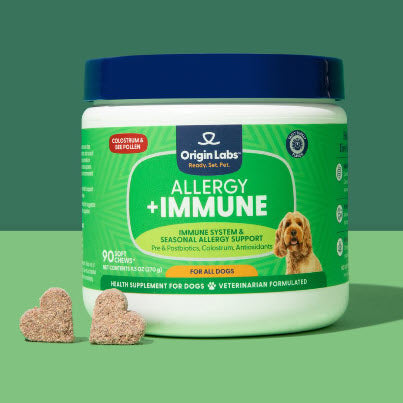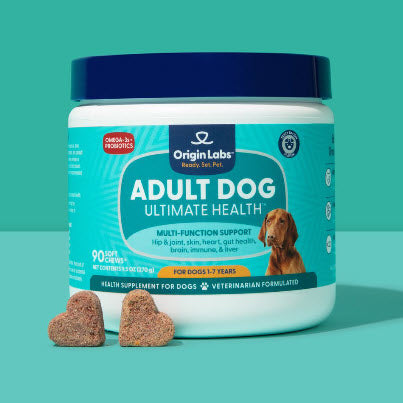Introduction
As responsible dog owners, it's crucial to understand which foods are safe for our canine companions. The question "Can dogs eat limes?" is particularly pertinent for those wishing to share a zest of their human diet with their pets. While limes are not inherently toxic to dogs, they can lead to discomfort and health issues if consumed improperly.
Key points to remember include:
- Limes can cause stomach upsets in dogs due to their acidity.
- The essential oils and psoralens in lime peel, along with the potential choking hazard of lime seeds, add layers of risk.
- Moderation is key when considering giving limes to your dog.
In the upcoming sections, we will discuss:
- Why small quantities of lime might be safe for dogs
- Warning signs of lime poisoning
- Recommended limits on lime consumption for canines
- A curated list of other fruits that are beneficial for dogs
We will also explore how feeding fruits like bananas or dragon fruit can be a healthy alternative. Bananas are safe for most dogs, but there are some things you should know before feeding them to your pet. Similarly, we will delve into the benefits and safety of dragon fruit for dogs, including its rich vitamin C, calcium, and iron content that contribute to your pet's overall health. This information will ensure you have all the necessary knowledge to safely incorporate fruits into your dog's diet.
Are Limes Toxic to Dogs?
When it comes to feeding dogs, many pet owners wonder about the safety of certain foods. One such food is limes. Are limes toxic to dogs? The answer is not straightforward. Limes per se are not toxic to dogs. However, certain components found in limes can be harmful if consumed in large amounts.
Limes contain essential oils like limonene and linalool which are present in the peel and seeds of the fruit. While these oils contribute to the intense aroma and flavor characteristic of limes, they can potentially cause problems for your furry friend when ingested in substantial quantities. These oils can irritate your dog's stomach, leading to discomfort and digestive issues.
Interestingly enough, dogs tend to dislike the taste or smell of limes, which acts as a natural deterrent against consuming excessive amounts. This instinctive aversion could be attributed to their acute sense of smell which allows them to detect the potent oils present in limes.
Potential Dangers of Lime Peel and Seeds for Dogs
While we've established that limes aren't inherently toxic for dogs, it's crucial to consider the potential hazards associated with lime peel and seeds.
- Higher concentrations of essential oils: Lime peels contain higher concentrations of essential oils compared to the fruit's pulp. As a result, giving your dog a piece of lime with the peel could expose them to a greater risk of experiencing digestive issues.
- Choking hazard: Both lime peel and seeds pose a choking hazard for dogs. This risk increases if your dog tends to gulp down his food without chewing properly. To avoid this potential danger, always remove the peel and seeds before offering any portion of lime to your dog.
- Cyanide poisoning: Lime seeds also contain small amounts of cyanide. While one or two seeds might not harm your pet, consuming a large quantity could lead to cyanide poisoning. Therefore, it's best to stick to the safe side and always remove the seeds.
It's also important to remember that every dog is unique. What doesn't bother one dog might upset another. Thus, if you decide to offer your dog a lime, be sure to monitor them closely for any signs of discomfort or adverse reactions.
In conclusion, while limes are not inherently toxic to dogs, they should be offered with caution due to the potential risks associated with their peel and seeds. Furthermore, given that dogs naturally tend to avoid limes due to their strong smell and taste, it might be best to consider other fruits that your pet might enjoy more. If you're interested in learning more about what fruits are safe for dogs, we have compiled a comprehensive guide on the topic which includes information about fruits like blackberries, nectarines, and guava, that might be a safer and more enjoyable alternative for your furry friend.
Symptoms of Lime Poisoning in Dogs
When it comes to lime poisoning, there are certain symptoms in dogs that pet owners must watch out for. It's crucial to be vigilant and observant, as quick action can prevent more serious complications.
Signs of Gastrointestinal Upset
Firstly, if a dog has consumed a large amount of lime or ingested the peel or seeds, you may notice signs of gastrointestinal upset. This can manifest as:
- Vomiting: Due to the high acidity and essential oils in limes, dogs may vomit after consuming them. The vomit may contain pieces of lime or be tinged with green.
- Diarrhea: Limes can also cause diarrhea in dogs. If your dog has loose or watery stools after eating limes, it could indicate lime poisoning.
- Abdominal pain: Dogs might show signs of discomfort like whining, restlessness, or pacing. They might also adopt unusual postures such as arching their back or tucking in their abdomen.
Other Possible Symptoms
In addition to these symptoms, dogs might also show other signs such as:
- Loss of appetite
- Excessive drooling
- Sensitivity to light
- Lethargy
- Changes in behavior
If you observe any of these symptoms in your pet, it is imperative that you seek immediate veterinary care.
The vet will conduct a thorough examination and may request specific tests based on the symptoms observed. Blood work and imaging studies like X-rays or ultrasound could be needed to rule out other conditions and confirm the diagnosis.
While limes themselves are not toxic to dogs, certain components like essential oils found in the peel and seeds can be harmful if ingested in large amounts [^1^]. Therefore, it is important to prevent your pet from accessing these parts of the fruit.
Remember to always supervise your pet while they're eating and ensure all food is safe for them to consume. If you're unsure about a certain food, it's best to consult with your vet.
Moreover, it's not just lime that dog owners should be cautious about. There are other fruits that can pose risks to dogs if consumed inappropriately. For instance, can dogs eat papaya? This comprehensive guide provides insights into the safety of papaya for dogs, its potential health benefits, and how to properly include it in your pet's diet for optimal well-being.
Similarly, if you're wondering whether dogs can eat plums without any risks, this article explores the topic in depth. It covers the potential dangers associated with plum pits and cyanide, as well as suggests safer fruit alternatives for your pet's diet.
It is worth noting that essential oils found in limes are not the only ones that can be harmful to dogs. Essential oil and liquid potpourri poisoning in dogs is another serious concern that pet owners should be aware of
Other Citrus Fruits and Their Safety for Dogs
When it comes to citrus fruits that are safe for dogs, we often think of oranges and lemons. While these fruits are not toxic to dogs like limes, there are certain things pet owners should be aware of before feeding them to their furry friends.
Oranges: A Juicy Treat
Oranges are generally safe for dogs to eat and can even be a healthy treat option. They are packed with vitamin C, fiber, and potassium. However, it's important to note that oranges also contain sugar and citric acid—ingredients that can be harmful in large quantities.
Lemons: Sour and Unappealing
Like limes, lemons have a strong sour taste that most dogs find unappealing. This natural aversion helps regulate their consumption. However, lemons also contain compounds such as limonene and linalool found in the peel, which can cause stomach problems if eaten in large amounts.
Acidity and Potential Risks
The acidity in citrus fruits like limes, lemons, and oranges is primarily due to citric acid—a component that can cause upset stomachs in dogs if overconsumed. Here are some potential risks associated with citric acid:
- Stomach upset: This can manifest as vomiting or diarrhea.
- Dental concerns: Excessive acidity can lead to dental erosion over time.
- Photosensitivity: Certain citrus fruits contain psoralens which increase sensitivity to light.
Feeding Citrus Fruits to Your Dog: A Cautionary Approach
Because these fruits have high levels of citric acid, it's important to be cautious when giving them to your dog. Here are some guidelines to follow:
- Moderation is Key: Treat citrus fruits as occasional snacks rather than regular parts of your dog's diet.
- Remove Peels and Seeds: Always peel citrus fruits and take out any seeds before feeding them to your dog to prevent choking hazards and reduce exposure to harmful oils.
- Monitor Your Dog's Reaction: Start with small amounts and keep an eye on your pet for any negative reactions.
🐾 Fun Fact: Did you know that dogs have about 1,700 taste buds, while humans have around 9,000? That's why some flavors that we enjoy may not be as appealing to our canine companions!
Exploring Other Fruit Options for Dogs
While learning about the safety of different fruits for dogs, you might be curious about incorporating other types of fruit into their diet. Here are two options worth considering:
- Can Dogs Eat Watermelon?: Discover if dogs can eat watermelon, the benefits, risks, and how to safely include this hydrating treat in your pet's diet—particularly as a hydrating option during hotter months.
- Can Dogs Eat Pears? Nutritional Benefits & Tips: Learn about the safe ways to feed pears to your dog and the nutritional advantages they offer.
By understanding how different fruits can affect your dog's health—from acidic citrus fruits to sweeter choices like watermelon and pears—you can ensure that they have a well-rounded and enjoyable diet.
Can Dogs Eat Lime Juice?
A common question among dog owners is, "Can dogs eat lime juice?" Lime juice, similar to fresh limes, can be consumed by dogs in small amounts. However, caution should be exercised.
Lime juice is a concentrated form of the fruit, resulting in a higher acidity level. This increased concentration may lead to digestive issues in dogs when consumed excessively. Common digestive problems may include vomiting, diarrhea, and gastric discomfort.
Just as feeding whole limes to your dog requires careful removal of the peel and seeds due to potential choking hazards and toxic essential oils, serving lime juice too calls for controlled portions. The rule of thumb with any citrus fruit remains - moderation is key.
While lime juice might not be harmful per se, it's important to note that dogs usually do not favor the taste or smell of limes due to their high citric acid content. With this in mind, it might be best to choose other more dog-friendly options when looking for ways to hydrate or treat your pet.
Always remember that each dog is unique and may react differently to various foods. If you decide to introduce lime juice into your dog's diet, start with small quantities and observe any changes in behavior or health.
Even though lime juice is not toxic for dogs, there are other safer alternatives available that can offer hydration and nutritional benefits without the potential risks associated with high acidity.
Safe Fruits for Dogs to Enjoy
When it comes to giving fruits to your dog, it's important to know which ones are safe. Safe fruits for dogs not only taste good to them but also have health benefits. Before giving your dog any new foods, start with small amounts and watch how they react to avoid any stomach problems.
Apples
- Nutritional Benefits: Apples are a good source of important vitamins like vitamin A and dietary fiber that helps with digestion.
- How to Serve: When giving apples to your dog:
- Wash the fruit thoroughly.
- Remove the seeds by taking out the core since they contain harmful cyanide.
- Cut the apple into slices that are suitable for your dog's size.
- Ways to Offer: You can give apple slices as a crispy treat. Another option is freezing the slices for teething puppies to chew on.
Bananas
- Nutritional Benefits: Bananas are full of potassium, low in sodium, and have natural sugars that provide quick energy.
- Feeding Tips: Because of their sugar content:
- Give bananas in moderation.
- Peel the banana and offer small pieces according to your dog's size.
- Health Benefits: The natural fiber in bananas helps with digestion and can regulate bowel movements.
Blueberries
- Antioxidant Properties: Blueberries have lots of antioxidants that support the immune system and protect against damage from free radicals.
- How to Serve:
- Introduce blueberries one by one to make sure they don't cause any negative reactions.
- Frozen blueberries can be a refreshing treat, especially on hot days.
Remember, it's best to introduce new foods slowly into your dog's diet. Pay attention to how they react to each fruit and talk to your vet if you see anything concerning. Fruits should be given as occasional treats, not as a main part of their meals. By choosing safe fruits for dogs and giving them the right way, you're adding nutritional value and variety to your furry friend's diet.
How to Safely Feed Fruits to Your Dog
Adding fruits to your dog's meals can be a great way to give them a healthy boost. But it's important to do it right. Here are some tips for safely feeding fruits to your dog:
1. Talk to Your Vet First
Before making any changes to your dog's diet, including introducing new fruits, it's best to consult with a veterinarian. They know your dog's medical history and can advise you on what's safe and suitable for them.
2. Be Aware of Unsafe Fruits
While many fruits are safe for dogs, some can be toxic and should never be fed to them. Grapes and raisins, for example, have been known to cause kidney failure in dogs. Make sure you're aware of these unsafe fruits and keep them away from your furry friend.
3. Treats Only, Please!
Fruits should only be given as an occasional treat, not as a replacement for their regular meals. Dogs have specific nutritional requirements that are best met through balanced dog food. Fruits alone cannot provide everything they need.
4. Watch the Portions
When giving fruits to your dog, consider their size and activity level. Too much fruit can lead to weight gain or other health problems due to the high sugar content. Moderation is key!
5. Prep Work Matters
Before serving any fruits to your dog, make sure they are washed thoroughly and prepared properly. Remove all seeds, pits, stems, and leaves as these parts can be harmful or pose a choking hazard.
By following these guidelines when incorporating fruits into your dog’s diet, you'll be promoting their overall health and well-being. Remember, responsible fruit feeding is all about balance and mindfulness towards your pet's needs!
Conclusion
Responsible pet ownership means knowing which foods are safe for dogs, including limes. As we've learned, limes themselves are not poisonous to dogs, but there are important things to keep in mind:
- Moderation is key: Dogs usually don't like the taste or smell of limes, which can actually be a good thing. It helps prevent them from eating too much.
- Watch out for the peel and seeds: These parts of the lime contain oils and chemicals that can upset a dog's stomach if eaten in large amounts. They can also be a choking hazard, so it's best to remove them.
- Pay attention to any changes: If your dog eats limes and starts vomiting, having diarrhea, or being sensitive to light, it's important to get them to the vet right away.
Knowing what foods are safe for dogs is an important part of taking care of them. While limes aren't something dogs need in their diet, understanding their effects can help us make sure our pets stay healthy and happy.
And when it comes to giving our furry friends fruits as treats, there are other options that might be better:
- Apples: They're crunchy, low in calories, and a good source of vitamins A and C.
- Bananas: These are easy to digest and provide potassium and fiber.
- Blueberries: Small but packed with antioxidants and other nutrients.
These fruits are generally safe for dogs and can be a healthier choice. But as always, it's best to check with your vet before introducing any new foods into your dog's diet.
So as we wrap up our discussion on limes and dogs, let's now shift our focus to how we can responsibly include these nutritious snacks in their meals.
FAQs (Frequently Asked Questions)
Are limes toxic to dogs?
Limes themselves are not toxic to dogs. However, certain components like essential oils (limonene and linalool) found in the peel and seeds can be harmful if ingested in large amounts. It's important to remove the peel and seeds before feeding limes to your pet.
What are the potential dangers of lime peel and seeds for dogs?
Lime peel and seeds can pose a choking risk for dogs, so it's crucial to remove them before feeding limes to your pet. The essential oils found in the peel and seeds can also be harmful if ingested in large amounts.
What are the symptoms of lime poisoning in dogs?
Common symptoms of lime poisoning in dogs include vomiting, diarrhea, and abdominal pain. It's important to recognize these symptoms and seek immediate veterinary care if you suspect your dog has ingested a harmful amount of lime.
Can dogs eat lime juice?
While fresh limes are generally safe for dogs in small amounts, concentrated forms like lime juice can be more acidic and may cause digestive issues when consumed in excess.
What are some safe fruits for dogs to enjoy?
Apart from limes, some safe fruits for dogs include apples, bananas, and blueberries. These fruits provide various health benefits and make delicious treats for your canine companion.
How should fruits be incorporated into a dog's diet responsibly?
It's important to consult with a veterinarian for any specific dietary considerations or restrictions when incorporating fruits into your dog's diet. Additionally, it's best to avoid fruits that are toxic to dogs (e.g., grapes, raisins) and use fruits as occasional treats rather than a staple food source.








